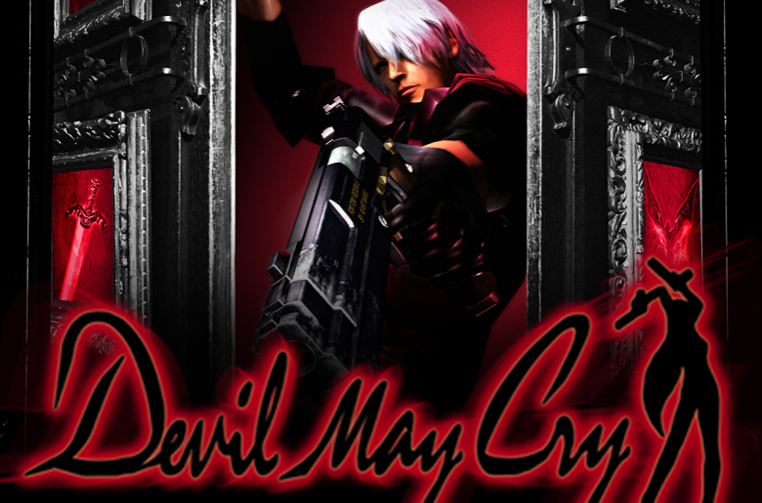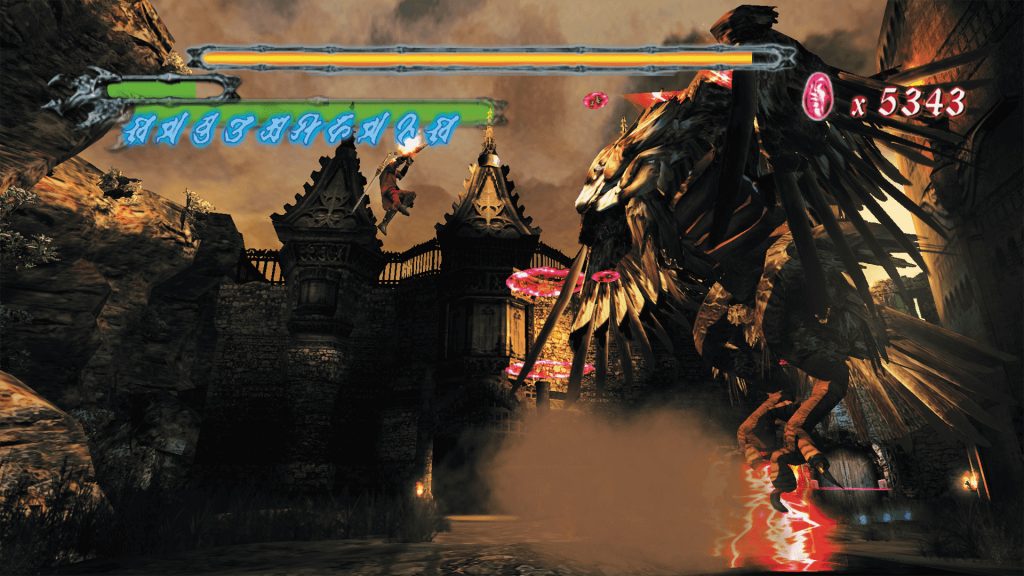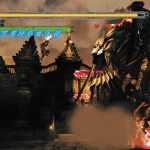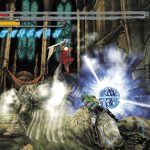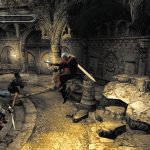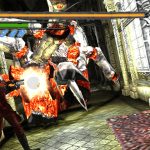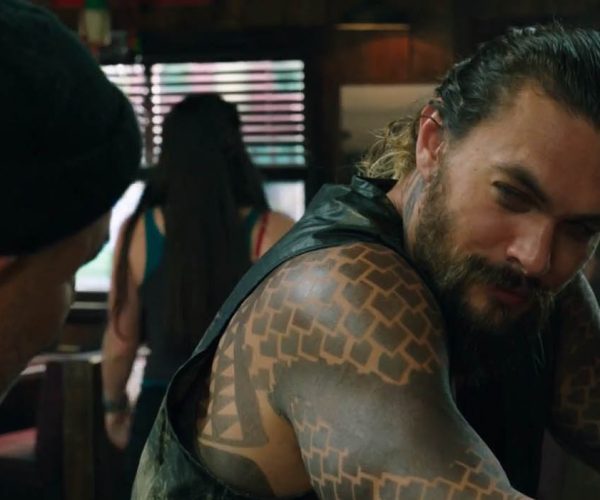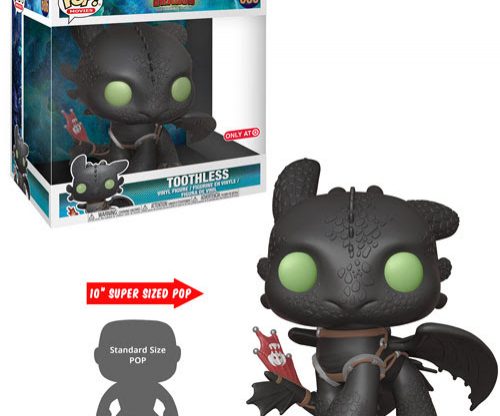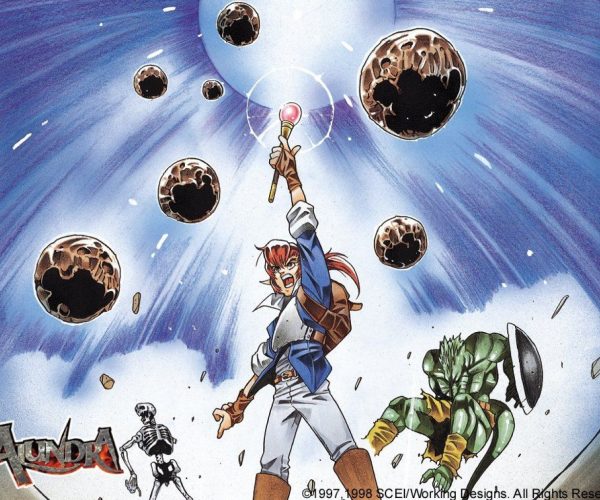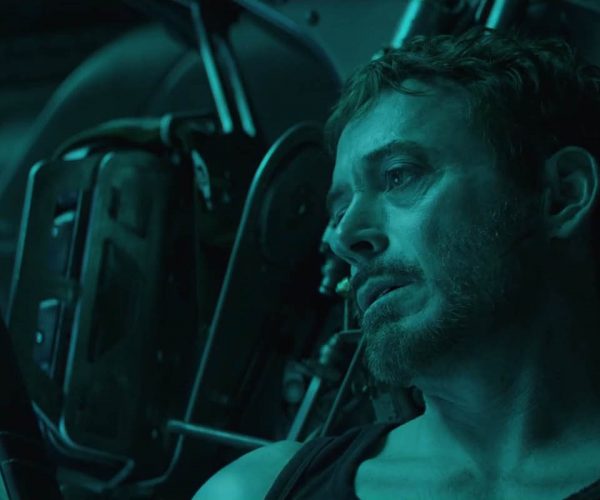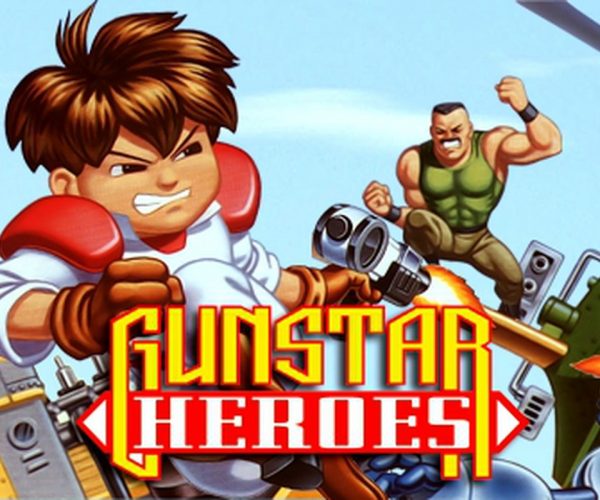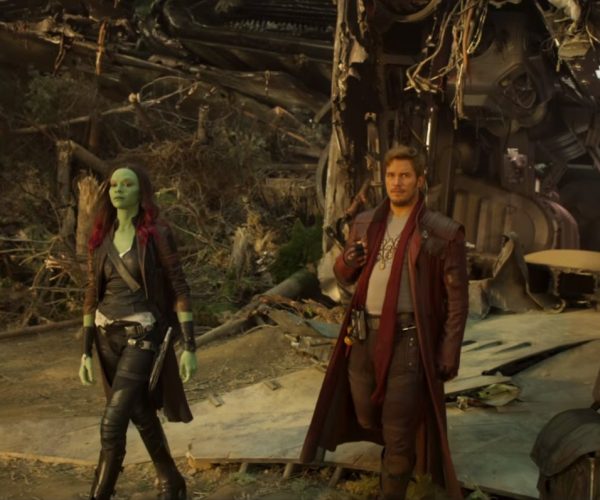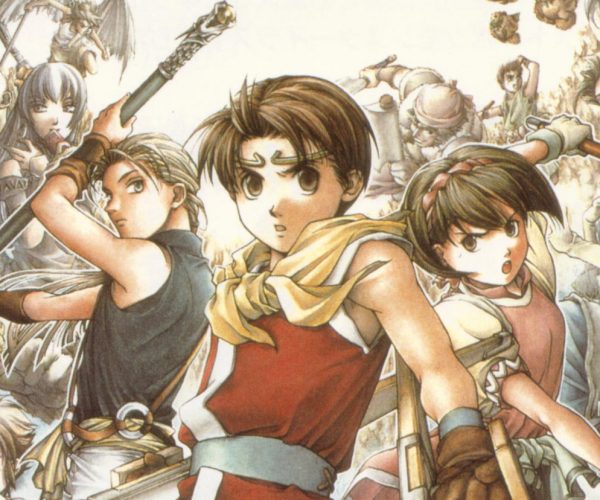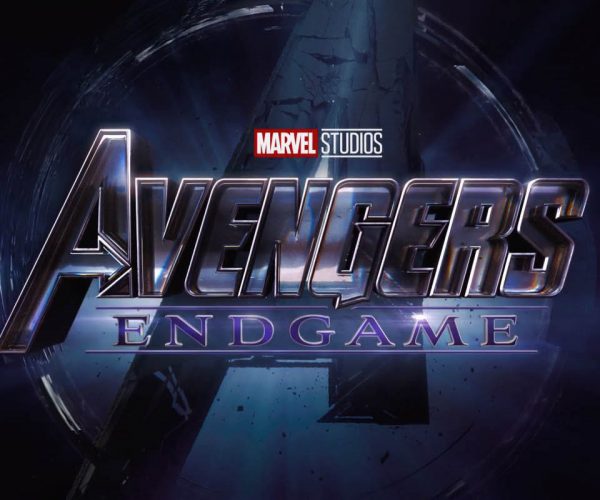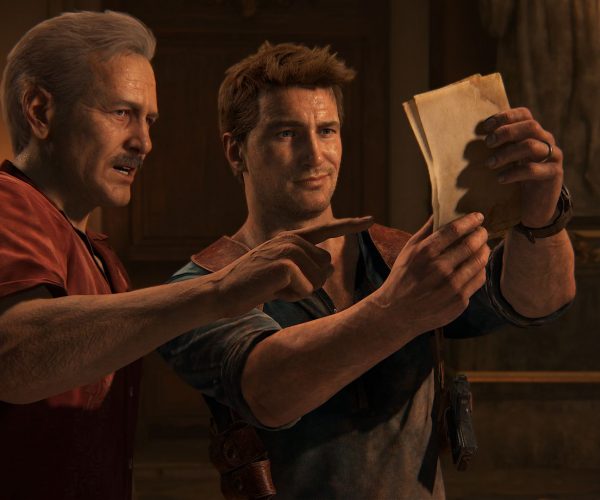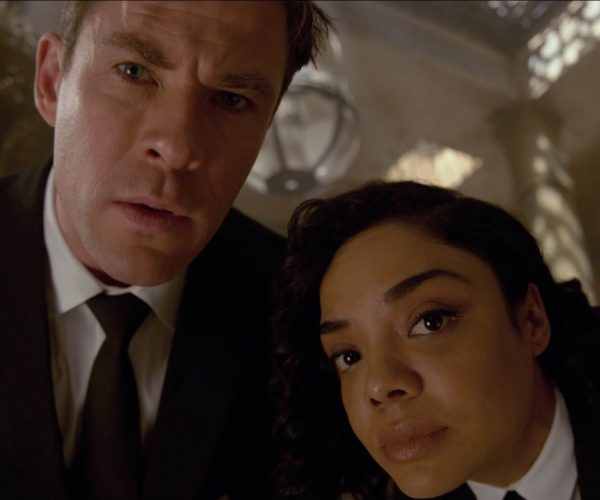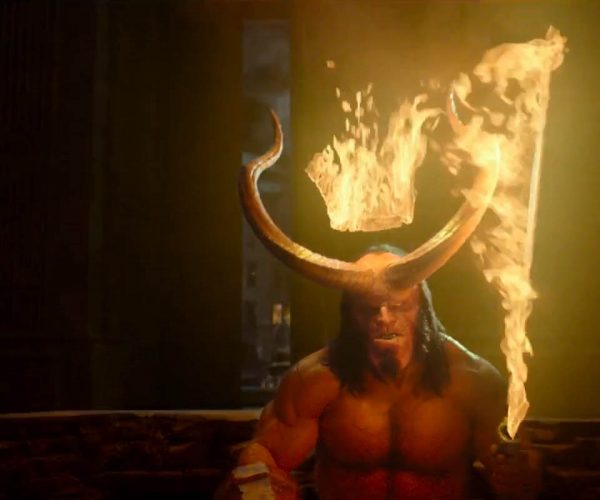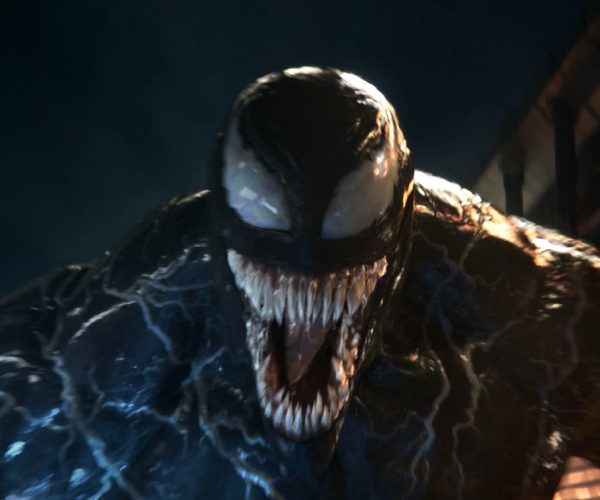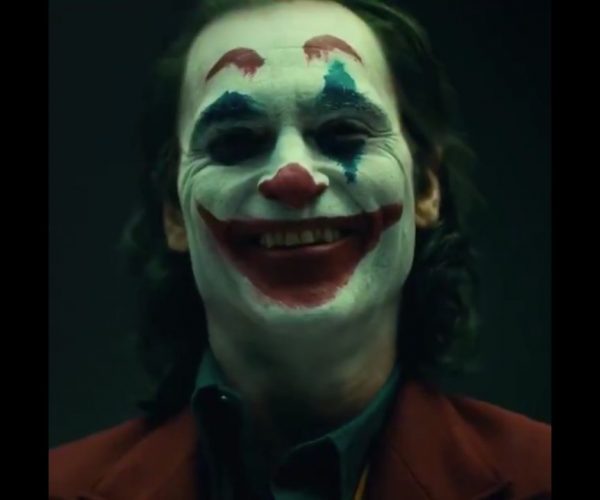Capcom’s groundbreaking action franchise Devil May Cry is poised to make a return to pop culture with a grand re-entry worthy of its brazen protagonist. Devil May Cry 5 promises to bring the series’ hard-hitting action back to the forefront of gaming, and at the same time, an anime series from Castlevania Producer Adi Shankar will retell the story of Dante on the small screen.
Now, more than ever, is the perfect time to go back and look at the original Devil May Cry. We often take the series for granted these days, seeing how many have copied its formula and how shooters and Dark Souls stole its thunder after the launch of the Xbox 360, but the original Devil May Cry remains a triumphant monument in the history of gaming.
Praised for giving the 3D hack n’ slash genre new life as one of the highlights of the PlayStation 2’s legendary first full holiday season, Devil May Cry established a new set of rules that action games would follow for an entire decade and added a celebrated franchise to Capcom’s long list of classic favorites. Gamers and critics alike praised its heavy hitting and acrobatic action as an unprecedented combination of simple button input and flashy graphical output that left the world nothing short of jaw-dropped.
For the following two decades, developers built upon the foundations that this landmark title laid down. Tecmo struck first by upping the ante with deeper combat in its Ninja Gaiden series, SCE Santa Monica pumped up the storytelling and production values for God of War, Capcom itself piled on the excess in its own sequels peaking with Devil May Cry 3 and Devil May Cry 4, and even the splinter group that left Capcom to form Platinum Games found success with its Bayonetta series.
And this is merely the big players of the action genre. Others like Ninja Theory have had their shot with Heavenly Sword and its own polarizing DmC: Devil May Cry reboot. Heck, even Konami wanted a piece of that action for its Metal Gear series with Metal Gear Rising: Revengeance. You know you’ve left your mark on gaming when Hideo Kojima is lifting your ideas.
And yet, even after all these years, the original Devil May Cry still feels like its own beast. No matter who improves on its formula or who overloads the action elements with ways to kick ass, Capcom’s original still managed a lot of unique design choices that not a single one of its spiritual successors or sequels were able to accomplish. Subtle choices, ones often overlooked and underrepresented when praise is poured upon this game.
What is it that keeps this game still so fresh in our minds? In some ways, why is this still the absolute best game in the genre that it single-handedly created?
The one glaring element that separates it from the crowd that followed can be found in the story of its origins. Director Hideki Kamiya often states that the original inception for the game came from an Onimusha glitch that found its way into a Resident Evil game. Indeed, many forget that Devil May Cry started life as one of the many prototypes for what Capcom was hoping Resident Evil 4 would eventually become. Capcom deemed the heavy focus on sword swinging and gun-slinging, not to forget the aforementioned pistol juggling glitch, too far removed from its survival horror series to carry the brand name.
And yet, Capcom obviously loved the prototype enough to give it a shot on the market, a bold move considering how many resources were sunk into Onimusha, a premiere action series it was trying to get off the ground at the time.
Despite being branded as a new franchise, Devil May Cry still bleeds with a presentation that is unique to Capcom’s Resident Evil and Onimusha series. “Cinematic” was a word often thrown around in those days, and while it was often misused to describe games with pretty 3D visuals, there really is no other word for what these games accomplished.
Using the power of 3D graphics in games, their developers turned to the language of cinema to tell their tales. Low angles, high angles, close-ups, establishing shots, the developers of these games utilized traditional Hollywood tactics to not only display cutscenes but also highlight the gameplay, creating subliminal images designed to stand out and be memorable rather than just flat, boring shots of their action.
To an extent, other publishers also have found success with similar games like Metal Gear Solid, Silent Hill, Fear Effect, and Parasite Eve.
But it was Capcom who dominated other developers with this style, accounting for why Resident Evil left such a powerful mark on the minds of gamers. The series’ developers found the best ways to show their creations off, weaving a much more memorable experience for gamers.
These were the developers that carried their style into Devil May Cry. Capcom kicked their cinematic storytelling into high gear with this game, utilizing the power of the PlayStation 2 to follow Dante and his wild move set in ways that the gaming world had never seen before.
And the combat isn’t all that shines in this game either. Simply walking around is rewarding with Capcom finding perfect angles to show off the effort they put into designing this world. One area in which Devil May Cry remains unrivaled is how well it pitches Dante’s surroundings to the point where the castle itself is just as important as the character himself.
Later games tended to forget this, opting to spend too much time focused on the central character.
I remember some critics responding to this idea of a fixed camera with negativity, saying they felt lost without being able to see exactly what Dante was doing at every second. Having lost a few fights in my day to a misplaced camera here and there, I can appreciate how each of Devil May Cry’s successors put the camera in the hands of the player. However, with this decision, the camera’s focus on the surrounding world drops significantly, and the game fails to deliver that same balance of action and visual storytelling that made Devil May Cry so striking in the first place.
This decision makes these successors feel just like video games.
Devil May Cry is something special. In some regards, the game succeeds as the culmination of not one but two console generations, setting the stage for action games in the coming generation while mastering Capcom’s cinematic style of the previous generation. Gamers tend to think that they are better storytellers than game developers and believe they know what is best. The truth is, they are not. These developers create classics for a reason, and like any storytelling device, leaving those camera angles in the hands of those that know how to use them creates something truly memorable.
But what good are camera angles and cinematic storytelling without a detailed world to show off? This is where Devil May Cry’s roots as a Resident Evil prototype push it to the forefront and ahead of those that followed. Not just in the crisp detail of Dante’s world, which takes inspiration from an era of highly detailed pre-rendered backgrounds, but in how this world is constructed.
Devil May Cry’s successors, for better or for worse, progress as all traditional action games do: segmented stages and linear hallways. Since the days of the Mega Man and even Capcom’s old arcades, the idea of “levels” is something the company rarely broke away from, except during this era. You know the formula, follow a path, engage in fights, press on for more action. There’s nothing wrong with games being made like this, and indeed many all-time greats follow this formula. Imagination and variety has to step in, though, and carry the game for its entire length, be it in the form of deeper combat mechanics or branching paths that lead to secrets.
But, again, this emphasis on “beating the level” is how you define a typical action game, something that Devil May Cry is not.
Thanks to its roots in Resident Evil, the original Devil May Cry has more adventure elements to it than anything else that has followed. Like the Spencer Mansion or Raccoon City, Devil May Cry’s Mallet Island is a constant, lingering, almost open-world setting that is just as important as a character as Dante, a setting that changes as you backtrack through it, evolves as you search for puzzle pieces, and adapts as the protagonist grows in strength. It is here that Dante lingers, looking for clues and seeking the proper way forward, not being pressed to fight on through a linear hallways.
Chapters don’t progress from point to point like in its sequels, they progress when you uncover a clue or a secret room. Bosses aren’t waiting for you at the end of the stage, they appear in rooms you’ve already explored or solved a puzzle in. Secrets aren’t hidden behind a fake wall or a barely out of reach jump, they are part of the main experience and will turn up if you play the game properly.
It is because you spend so much time in this setting that it remains so memorable. I can map out and recall a good 90 percent Devil May Cry’s world by just flicking on my memory switch, and that’s because I got to know the place rather than treat it as a a background for action or an obstacle that needed to be pushed through. My favorite room doesn’t even have any action in it! It’s just a tiny corner of the map with a haunted mirror and an overhang bed.
On the flip side, I can remember the boss fights of Devil May Cry 3 and Bayonetta, but I can’t for the life of me remember their settings in such detail.
In fact, one of the main criticisms of Devil May Cry 4 is that halfway through the game, you are finally put in control of Dante, but then immediately have to backtrack through each and every one of the stages Nero already fought through… just backwards. Repetitive and a bit boring. Devil May Cry does the exact same thing, but because you are so much more engaged with the setting and see it as more than just another “level,” returning to see how things have changed is more welcome.
“Subtle” is also not a word often used to describe a series that features trash-taking lava tarantulas, but the original game also has a subtle side that few action games have ever replicated. Devil May Cry overflows with style, and I don’t mean the mindless action or the bad-boy antics of its protagonist. I mean in the underpinnings of a mythology, something that lurks beneath the surface of the game and turns up in places you least expect to find it.
As a young, impressionable teenager at the time, one who just had his mind blown earlier that summer when his beloved Middle-earth came to life before his eyes in Fellowship of the Ring, I was more than ready to look between the cracks and find a deeper layer in between the swinging swords, magical realms, demons, and stylish weapons. Letting your eyes glaze over and seeing Devil May Cry as just an action game would be no different than doing so on your first viewing of Lord of the Rings.
I mean, it’s just an action movies with short people, right?
There is a mythology to both, present throughout the world and yet tucked underneath what your eyes can see. Again, subtly behind the style. Devil May Cry towers over God of War in its presentation of this mythology, dropping hints here and there as opposed to bluntly ripping the ankles off of Hermes for the sake of wearing his shoes while screaming “LOOK AT ALL THIS HARDCORE GREEK MYTHOLOGY!!!”
Yes, again, I understand that this is a game where an unnaturally white-haired man with an obnoxious red coat and dual black and white pistols gets into shouting matches with lightning infused griffons, but the true flavor of Devil May Cry comes from the statues, the interior designs, the architecture, the paintings on the wall, the sculptures found on scattered desks. Early in the game, Dante finds an airplane tucked away in a garage on Mallet Island. Why is this here? Whose airplane is this? Who knows, but man oh man, when the island crumbles around you at the end, you’ll be glad Capcom slipped you this subtle hint early on.
In the PlayStation days, Resident Evil used to fill its settings with needless props because it was an adventure game first and an action game second. Atmosphere and mise-en-scène were just as important to its success as its gameplay, and Devil May Cry, again, borrows this idea of its parent franchise to leave these unimportant yet flavorful details in every single room.
Who is Alastor, and why does he give his lightning sword to Dante? Who is Ifrit, and why does he have fire gauntlets? This isn’t Final Fantasy! Those questions… never answered, but it doesn’t matter in the least. The fact that you asked these questions means that the game has your imagination engaged with the smaller details alongside the bigger picture. No need for exposition or a cutscene describing it. Alastor and Ifrit… they’re cool!
I used to marvel at how the music changed when Dante approached a Goddess of Time statue, feeling comfort knowing that she would keep me safe. The design of the orbs in Devil May Cry were second to none in those days, and the weapon artwork oozed with style.
Ebony and Ivory? Why does he use them? Doesn’t matter, they’re cool! And I genuinely mean that. Before Dante’s guns got their own origin story, he just used a sweet pair of pistols that never ran out of ammo, and they happened to be black and white. That’s it, no reasoning necessary. Devil May Cry came into the world before fanboys got the craving for endless exposition and before the Internet could adequately satiate those cravings. Devil May Cry wasn’t afraid to leave a few things unanswered.
And even in the most unlikely places, you’ll find this attention to detail in full force. Devil May Cry’s true gift to the world… its menu screen. No lie, back in those days, I had just as much fun flicking through the menu as I did playing the game, soaking up the music, gazing at the smoke effects around the borders, gawking at the art and sometimes selecting weapons just because I like how they animated as Dante equipped them.
You can imagine my disappointment when I fired up Devil May Cry 2 and got nothing but a static screen and text to greet me. Ugh, boring.
All of these details, even the menu screen for God’s sake, plays into Devil May Cry’s style and balances out the over the top nonsense… so that the game is not just over the top nonsense. Remember that the next time you’re playing DmC: Devil May Cry and there is something off about Dante and that disgusting, oozing Succubus thing hurling certain four letter words back and forth at each other. That game and most of Devil May Cry’s successors lack this important subtle side to engage your imagination and bring it back to a place of peace.
Gameplay-wise, Devil May Cry’s successors unquestionably trounce all over it, but don’t let that trick you into thinking this game isn’t worth it for the combat alone. Not in the least.
Devil May Cry provides, what, three melee weapons? Five guns, of which only four are useful? A technique or two for Dante to unlock? The point is, Devil May Cry gets its point across with a lot less than its successors. Each weapon has a meaning, has a purpose, and I am far more impressed with speed-runners who blast through this game with intimate knowledge of this small arsenal’s intricacies as opposed to those who master later action games and have a seemingly infinite choice of weapons to select from.
Doing more with less, a theme I treasure in video games.
I also appreciate how boss battles in Devil May Cry have alternate means of victory. Sure, pattern memorization, practice, and execution is a tried-and-true method that works just fine here, but these alternative means of victory give this game a brief dose of Metal Gear Solid depth that other games of its class lack. Those who like to experiment with environments and surroundings will be rewarded.
I appreciate how Devil May Cry’s combat is organic and not contrived in the least. One problem I’ve always had with the God of War series is that each encounter has a solution. See this enemy, use this weapon and this combo, and you’ll win. Devil May Cry is in no way like this. Any combat technique works in any situation, and more often than not, you’ll be forced to swap between aggressive and reactive tactics.
And then there is the length. Devil May Cry graciously came around before it was determined that action games had to be at least 15-hours to be worth a full $50 or $60. Devil May Cry wraps itself up in under five hours if you know what you’re doing, and while that might seem short by today’s standards, it also means that this game does not overstay its welcome or drag itself out for far too long. I would much rather be satisfied with wrapping up a consistently good, short experience rather than begging for it to come to a close, as I often find myself doing with many action games these days.
This exponentially increases organic replay value. Devil May Cry doesn’t have a New Game +, but I’ve played through it countless times because I like it. It doesn’t feel like a chore to pick up and play, I know I can get what I want from it over a long afternoon or a lazy holiday weekend, and I feel good once it all comes to an end.
Nice, clean, and neat. Why can’t more action games be like this?
I have no doubt that Devil May Cry 3, which is a fantastic video game, or Bayonetta or any of the countless other action games that have built on Devil May Cry’s success are superior action games. They deserve their credit for pushing the boundaries that this game laid out. However, as a whole, as a moment in time, and as a treasure that ages flawlessly while those successors drop off the map as soon as the next hot thing comes around, I choose Devil May Cry every time as the king of its genre.
Taking into account the style, the storytelling, the setting, and the subtle messages below the insane gameplay, it is a much better whole package than those other games, which just feel like video games by comparison.
Devil May Cry 5 is just around the corner, but I don’t want Capcom to try and recreate the perfect pitch that this game nailed. Gaming has evolved too much since then, and Devil May Cry as a franchise is just another baller, one that I don’t think can rewrite the rules it did way back when. Those turn-of-the-millennium trends are outdated for modern games, but for a very slim moment in time, Devil May Cry had the hindsight and the foresight to represent a decade and a half of gaming in a single package and become an all-time great because of it.
